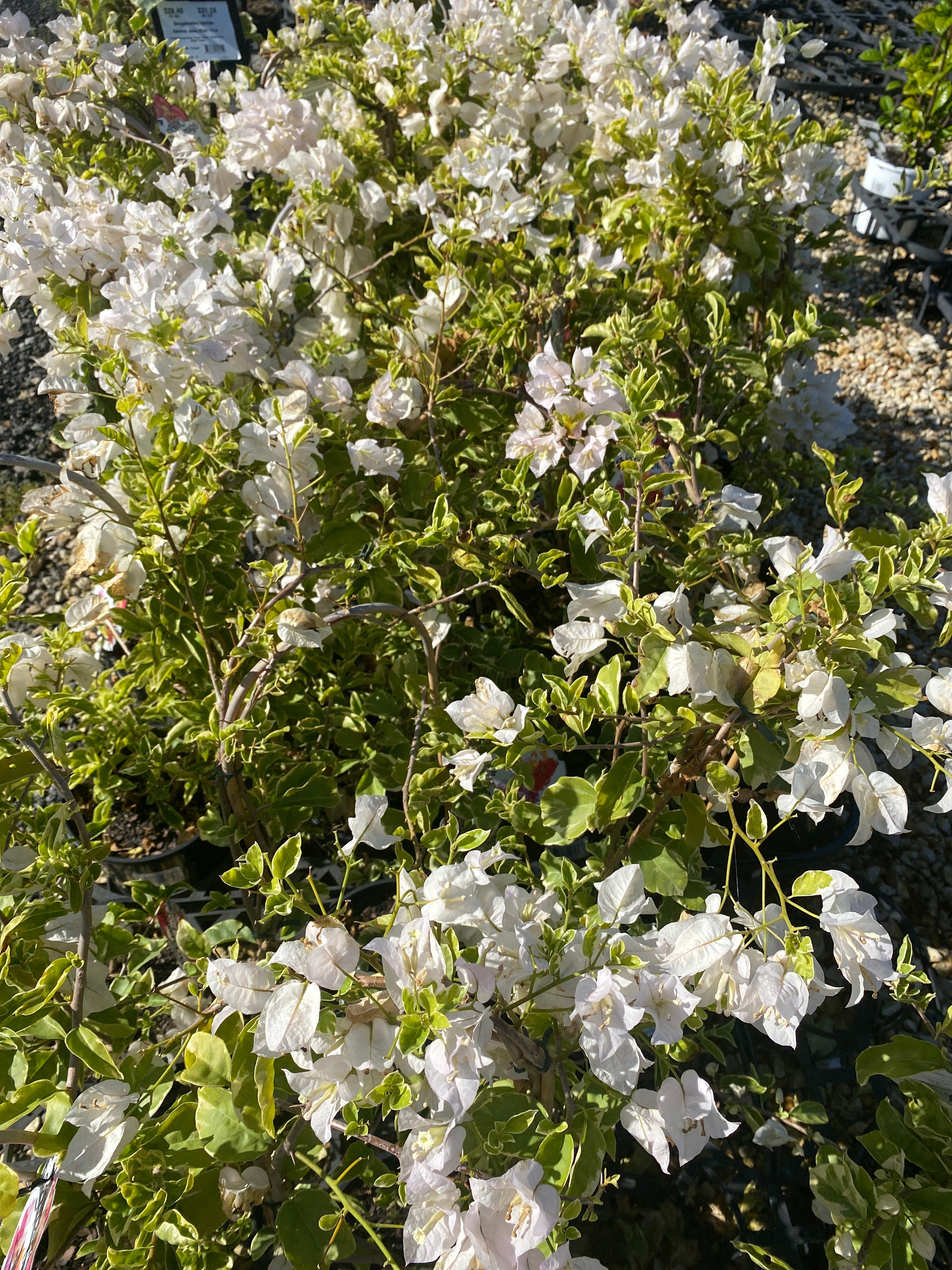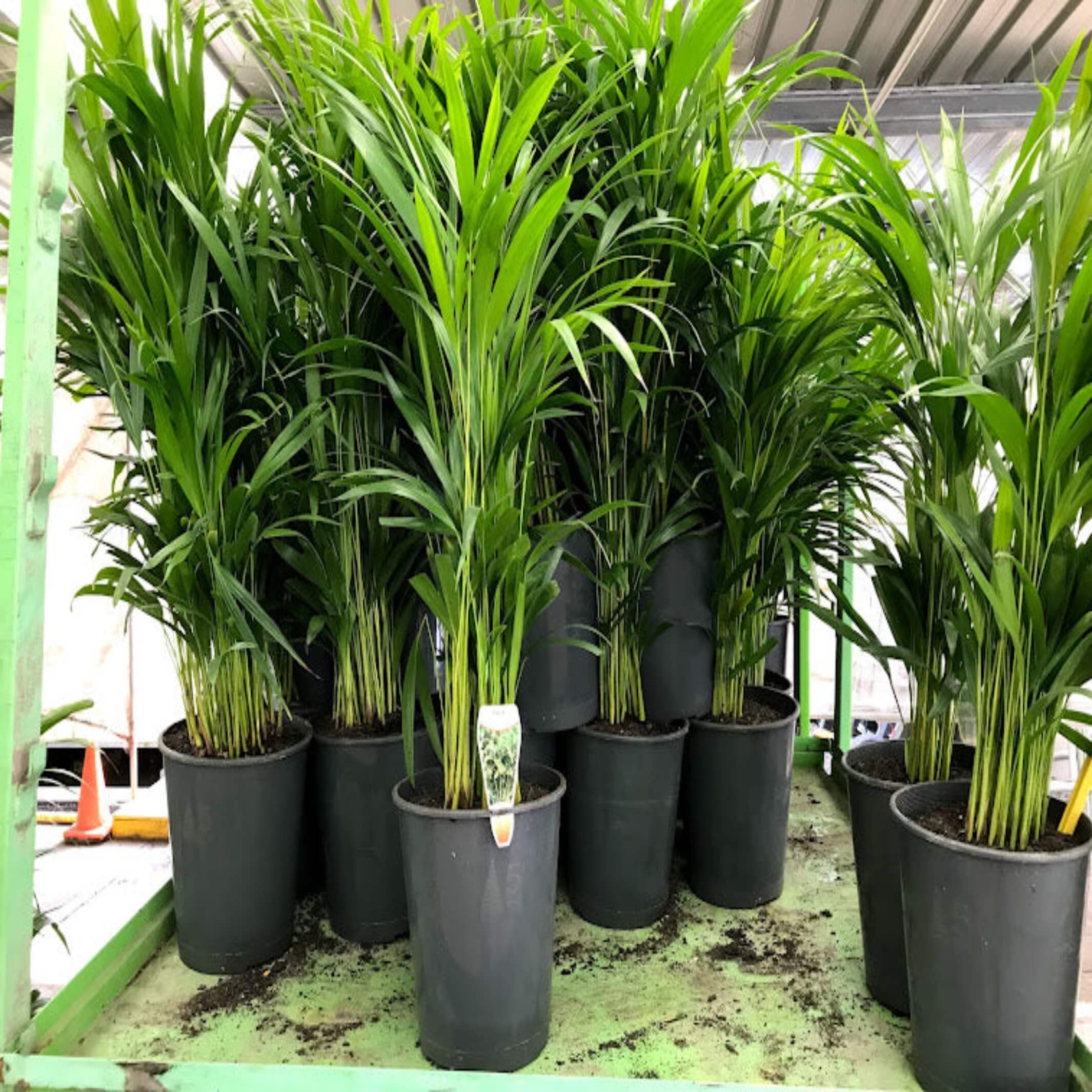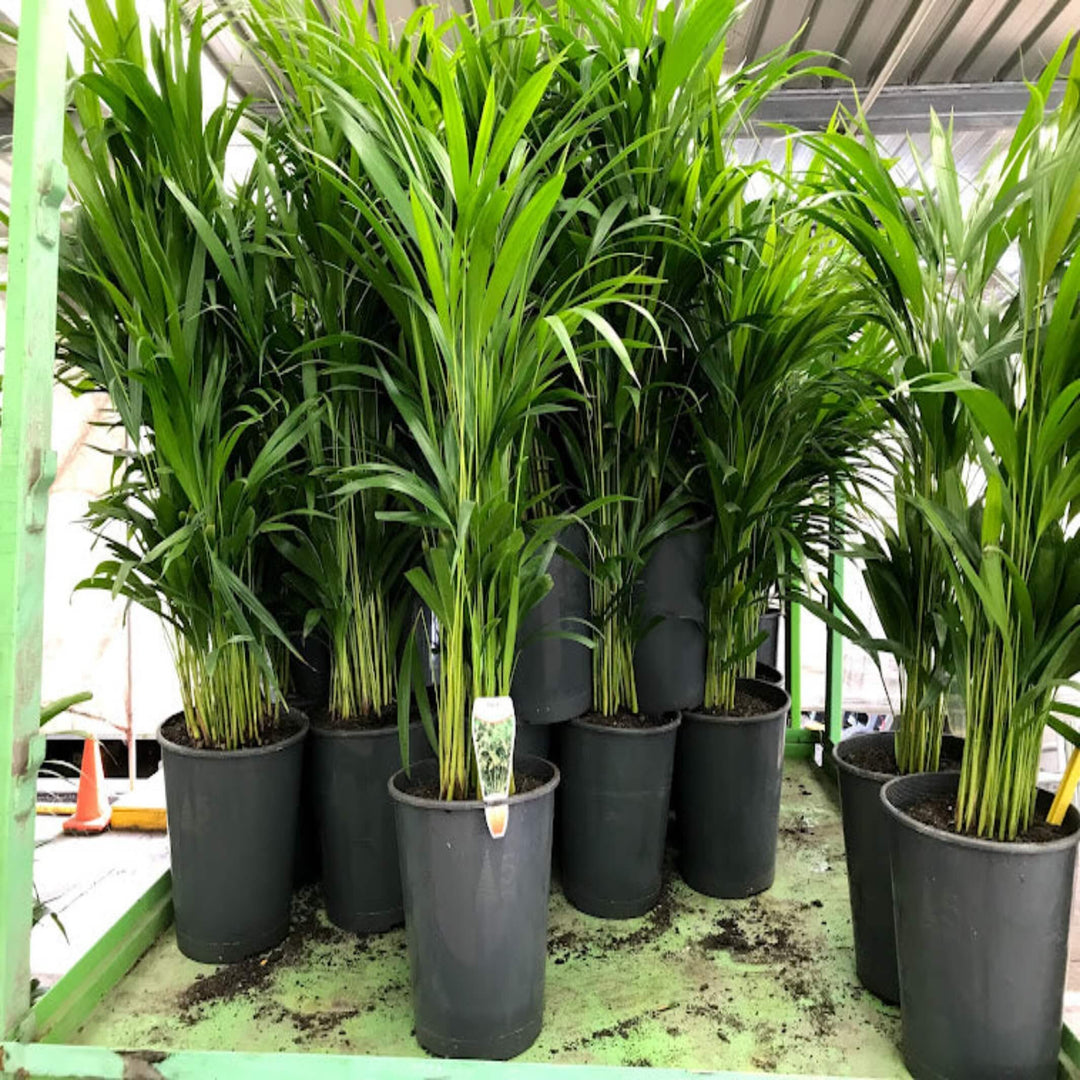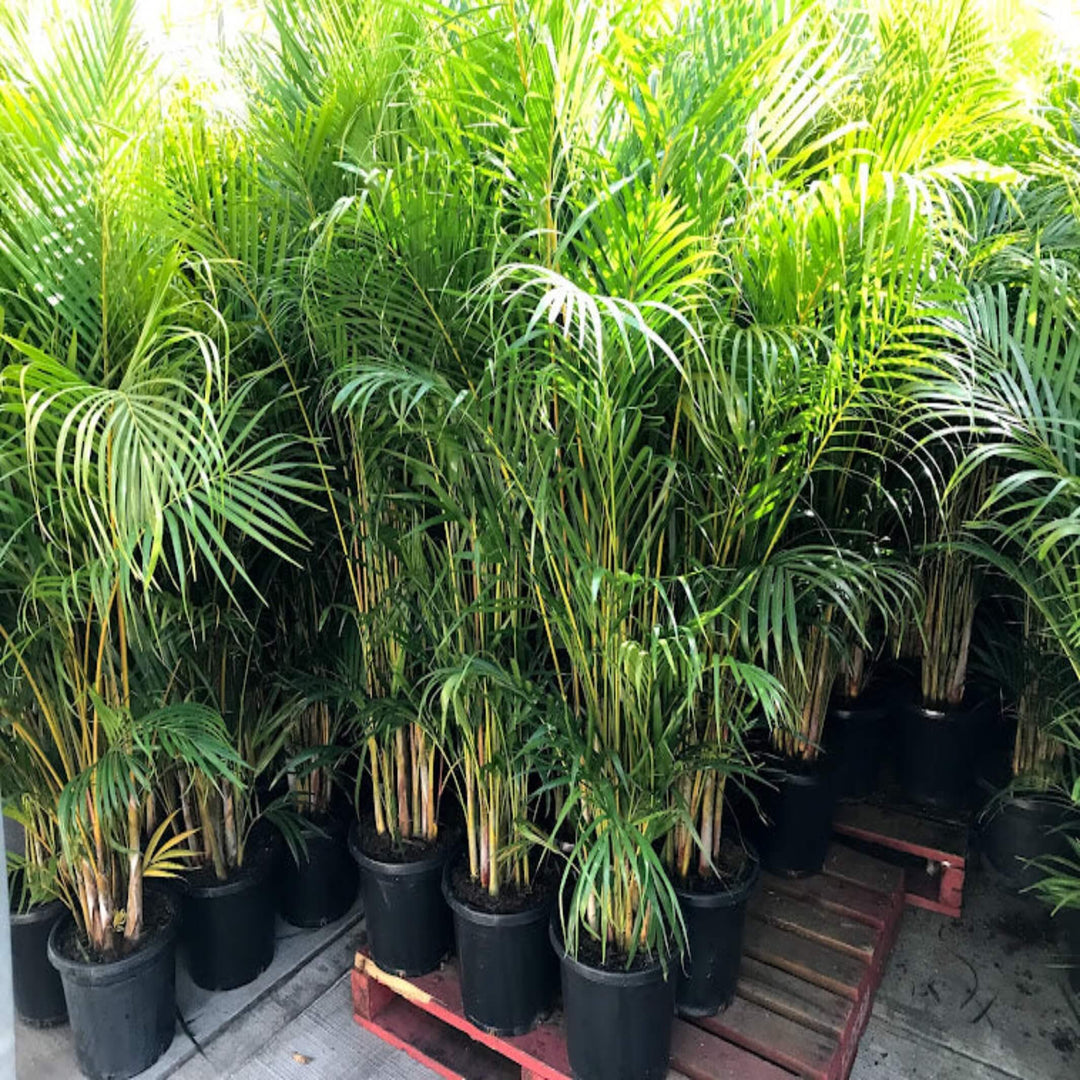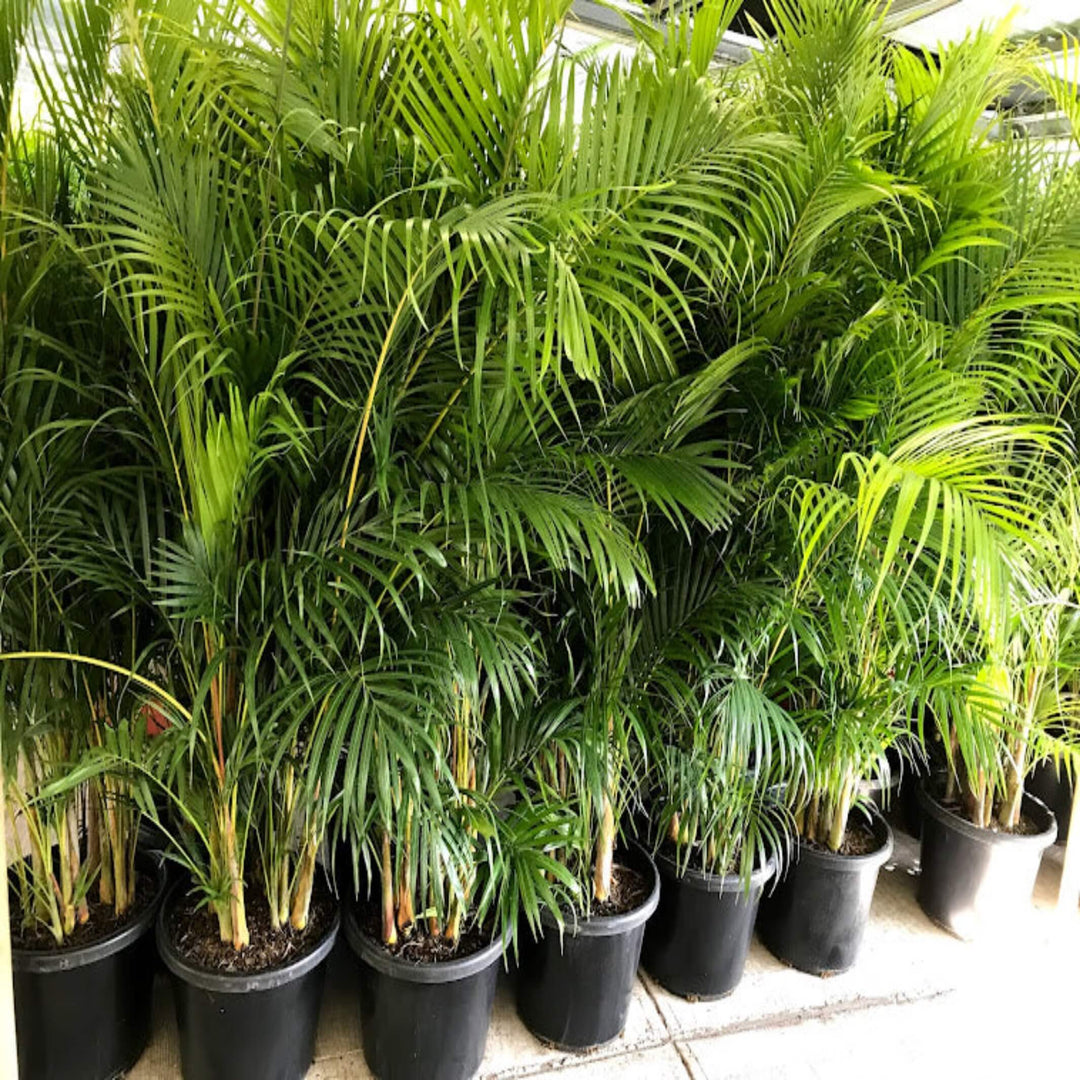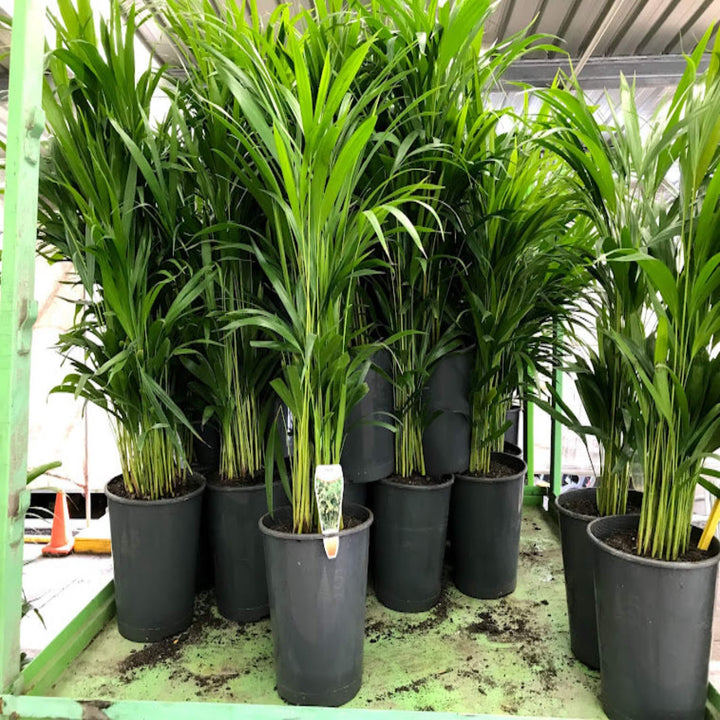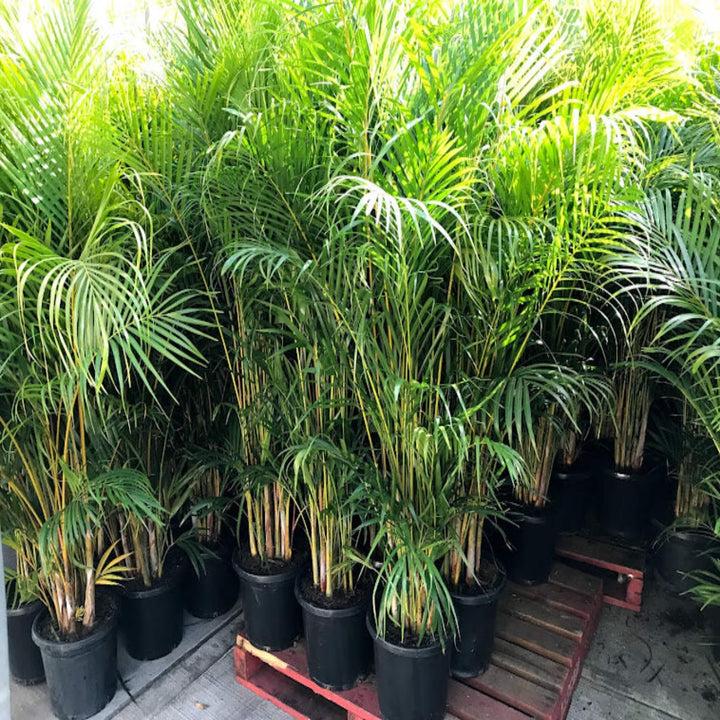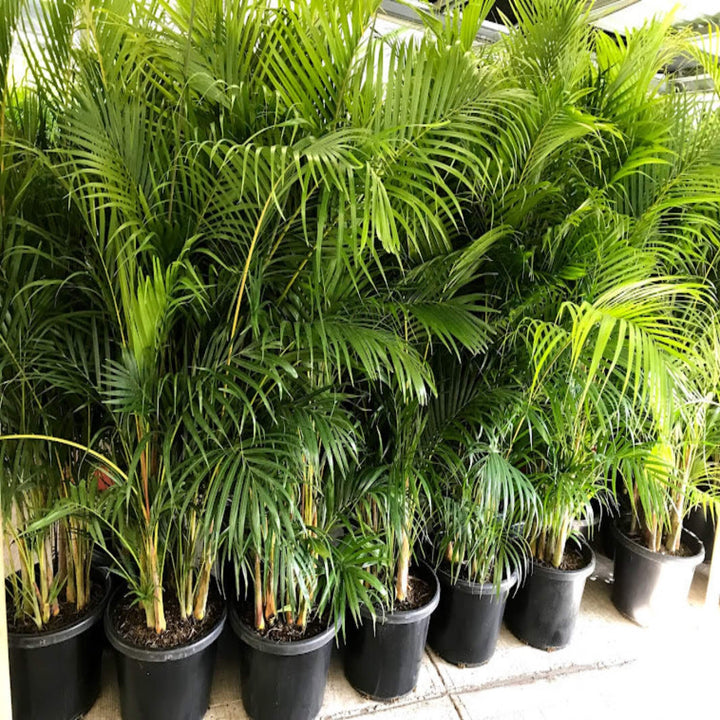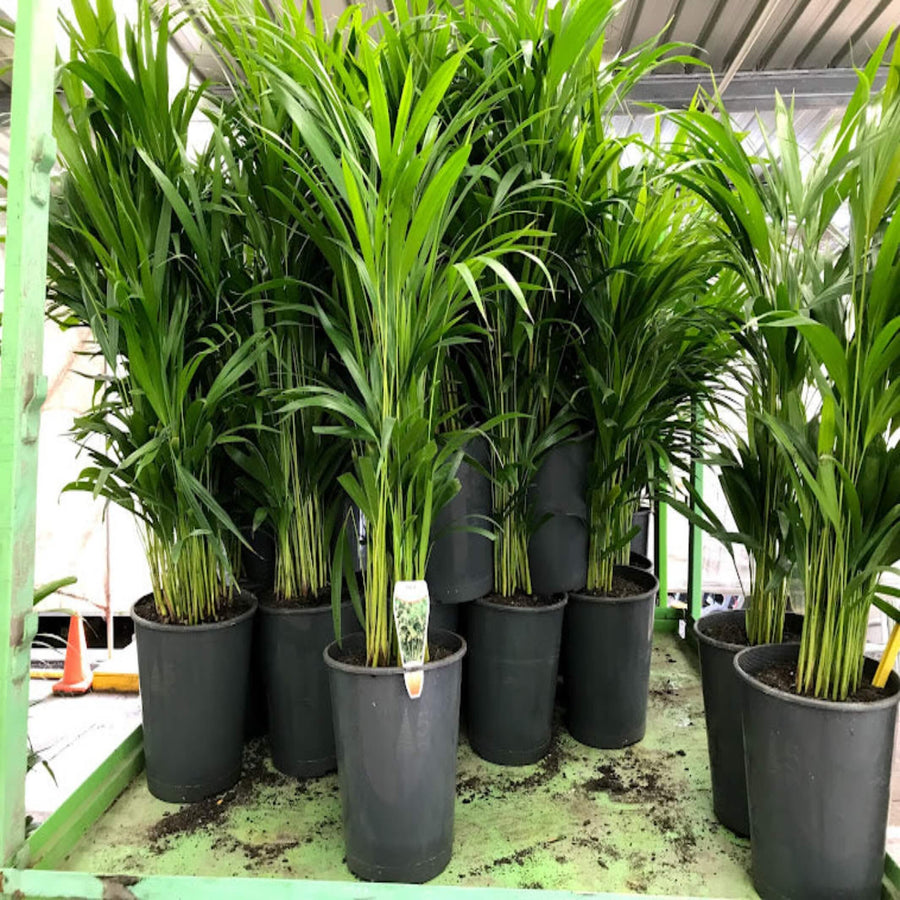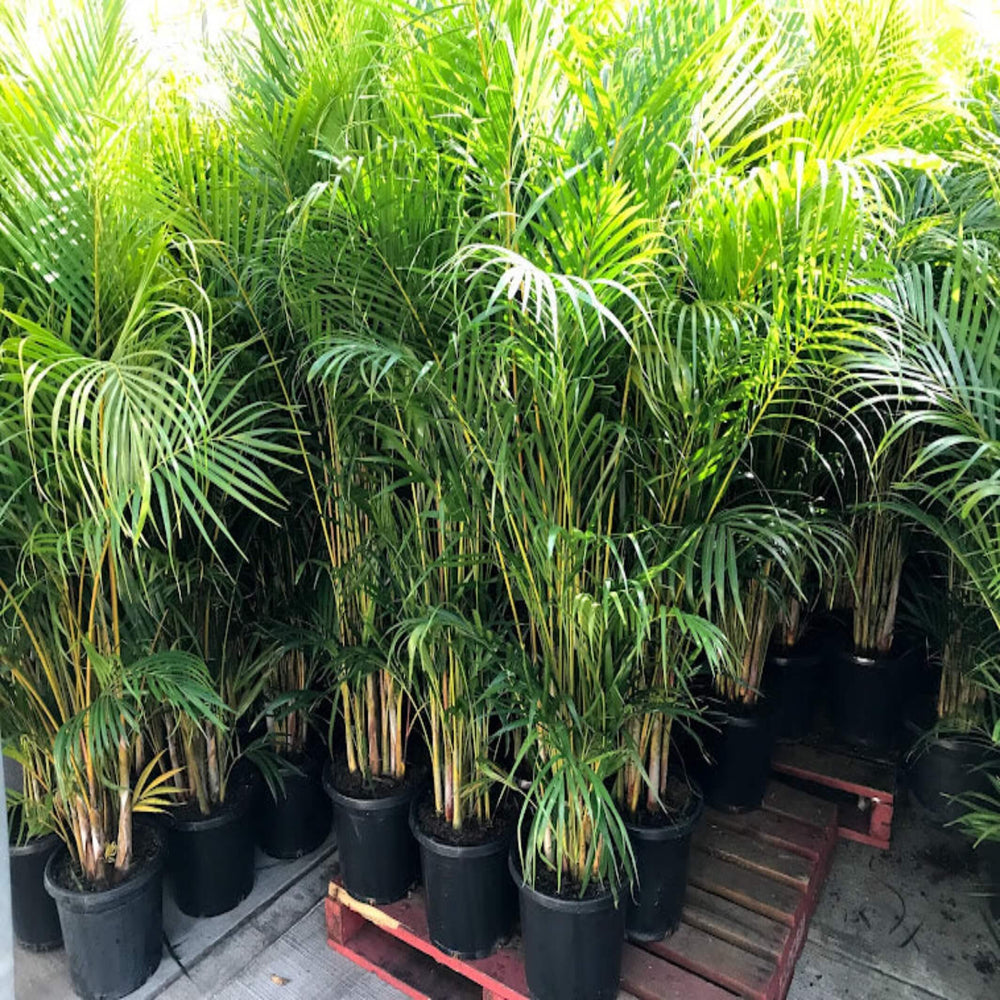Dypsis lutescens (Golden cane palm)
Golden Cane Palms
A well-known and attractive palm with a golden stem and yellow-green fronds is the Golden Cane Palm. This butterfly palm leaf has rounded branches and is arranged to create the appearance of butterfly wings. All corners are given a natural and tropical flair. Golden cane Palms grow easily. Gold cane palms are clustered palms with more than 10 rings of golden-colored bamboo-shaped trunks. Foliage's have a long green habit with a fine texture. The Golden Cane Palm is incredibly flexible and may be cultivated indoors or outdoors, in full sun to partial shade.
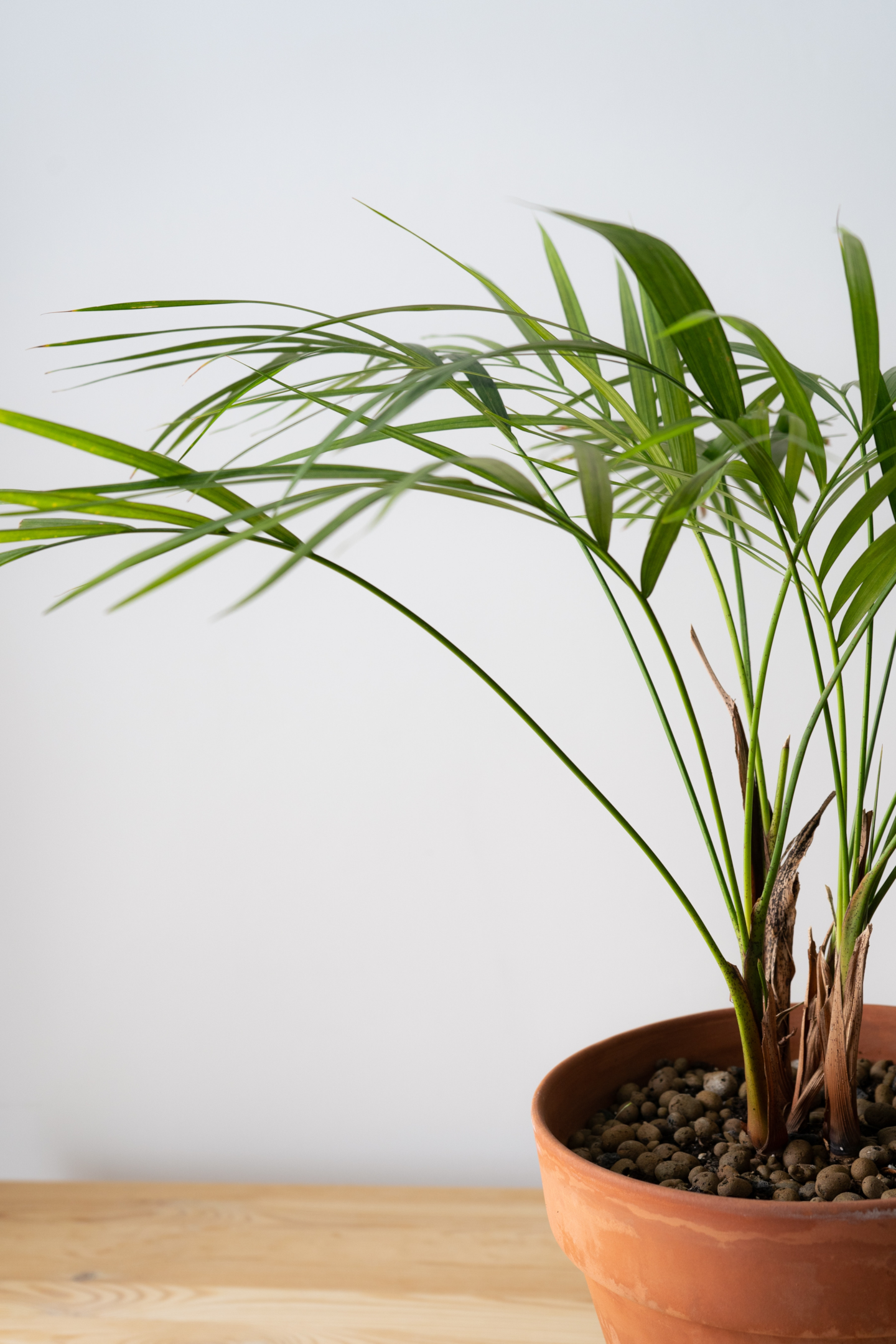
Golden Palm- How To Grow Dypsis Lutescens
Golden Palms (Dypsy lutescan) are an excellent choice for a home garden. These trees can bring some tropical flavor to your home. Growing in clumps in narrow and tall erect stalks, this species has a feathered appearance. Typically preferring warm, humid weather, it's one of the most popular plants for home gardening, providing you with years of lush greens.
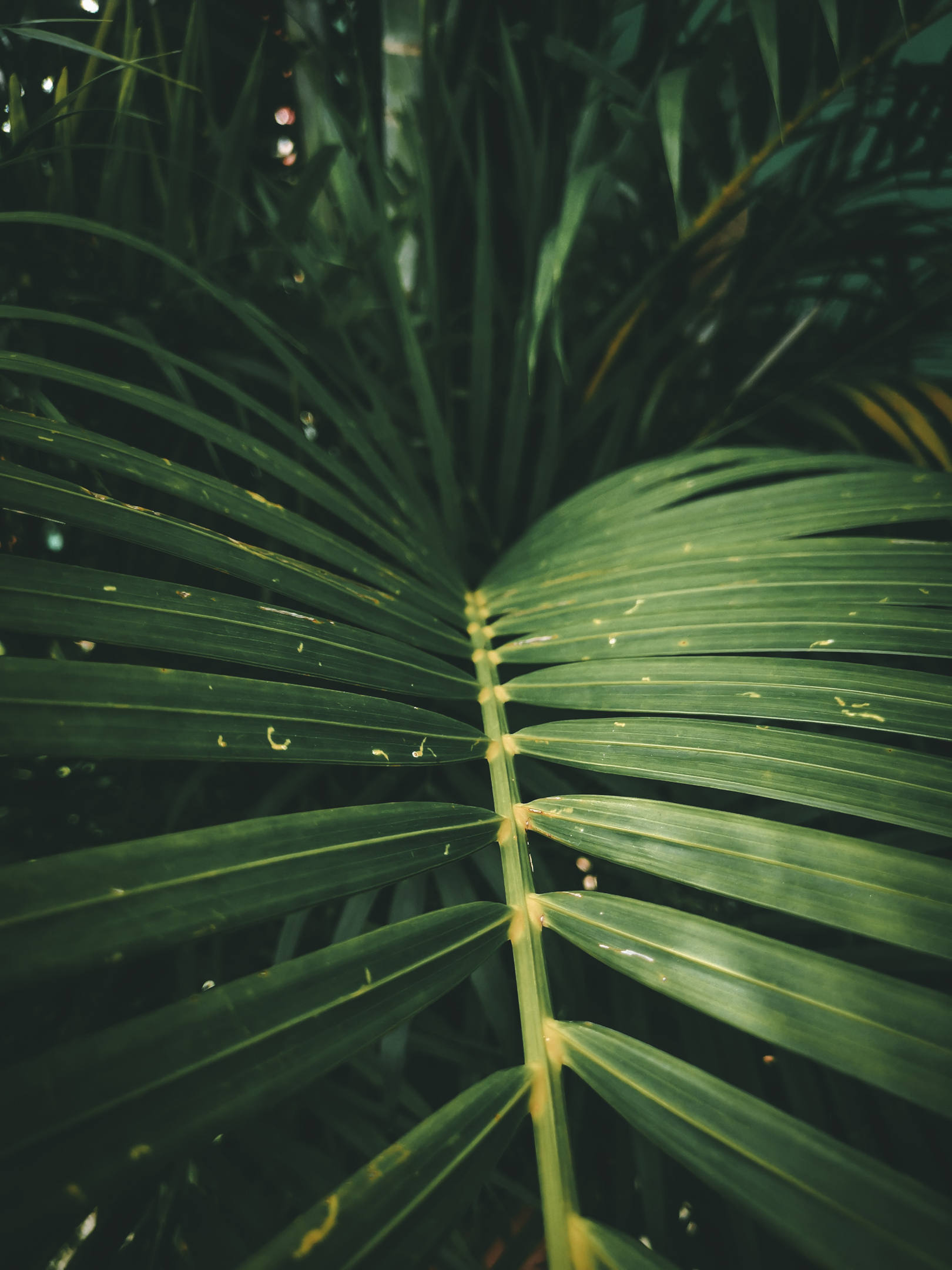
Golden Cane Palm – Dypsis lutescens Lighting & Position
Place your golden cane palms in an open place with ample natural sunlight. This looks great beside your television, besides a sofa, or behind windows. This is an interesting décor piece; you must not put it on very dark surfaces because of the plant's slow growth and poor conditions. If we want our plants to grow in full color, we will have enough sunlight to enjoy them. The plants have good handling ability and would work as an outdoor garden plant on balconies as well as a window facing Easter.
Butterfly palm – Dypsis lutescens Soil & Drainage
Growing golden cane palm as a house plant is relatively easy and does well in the most popular garden mixes but is fully grown on peat soils and slightly acidic soil with pH levels 6.0 to 7.7. Keep soil drained because trees are more susceptible to root rot from wet or contaminated soil.
Golden Cane Palm – Dypsis lutescens Watering
Maintain soil firmly moist but not dry. The ground should be thoroughly cleaned to ensure that the water is not blocked. Let it cool a bit after watering. Ensure that the top 2 inches of soil dry out completely before watering and reduce water consumption at the end of the fall and winter. Bottom watering may also be a great choice, particularly if starting to check how often they drink. Water is softer and more frequent during warmer seasons to stimulate healthy growth.
Golden Cane Palm – Dypsis lutescens Pruning
Golden cane palm has relatively small maintenance and grows up to 10 feet in height. It grows slowly so that you're never worried about the palm growing uncontrolled. Occasionally, a dead leaf may be pulled out of the tree. A little bit of pruning helps the palm to maintain its natural shape.
Golden Cane Palm – Dypsis lutescens Humidity
The Golden cane palm, like all Tropicals, prefers the medium-warm and high-humidity environment. Generally, this will be misted during the Winter, particularly compared to summer. Keep away from cold and heat vapors causing problems to plants.
Golden Cane Palm – Dypsis lutescens Fertiliser
Cane palms are an excellent feed for birds of the wild. Feed the plant slowly throughout the growing season. To promote quicker development, use an oxygen-rich fertilizing agent. Fertilize twice a year with an all-purpose slow release or granule fertilizer. It's important to choose a slow release fertilizer. If the fertilizer builds up in the soil and is too strong, it can cause leaf burn and brown spots.
Golden Cane Palm – Dypsis lutescens Vulnerability to Pests & Diseases
It is common for leaf tip burns that indicate plants have been over-watered, sluggish temperature, or dry soil. Adjusting watering patterns and keeping temperatures low to 12C are good ways to resolve this issue. Overwatering is sometimes associated with fungal diseases called pinkrots. The palm's crown is covered with pink growth which contains bacteria spores. All infected fronds must be removed, and palms must be repotted. A common pest Mealybugs possess numerous Golden Cane branches, which are a rich hideout in many areas.
Golden Cane Palm – Dypsis lutescens – Plant Care Tips
Dypsis lutescens Golden Cane Palm combines Japanese bamboo style charm with tropical vibes and vibrancy with golden stem - and has plenty of colors! The palm has dense branches which makes the tree a good screening option whether for indoor or outdoor use. Light The Golden Cane Palm thrives in full sun to part shade. It will give any corner a touch of natural detail. Palm Care Summary Common Name - Areca Palm, Butterfly Palm, Golden Cane Palm, Yellow Palm. Scientific Name - Dypsis Lutescens. Height- 6-12 feet. Spread- 6-8 feet. Water Maintain moist soil. Water when the top 1-2 inches of soil is dry. Light Bright, indirect light Soil Well draining loam.
Golden Cane Palm – Dypsis lutescens Design Tips
Golden cane plants have a yellow trunk which can look fantastic in dark pots like charcoal or metal gray, but they are also striking in white or dark blue. Terracotta vases are great for complimenting green leafy foliage, and white is an attractive option and works well with all plants. Plant species such as Persian Shield can provide an excellent accompaniment plant that pops from the yellow background. Golden canes are great for growing on a trough shape to create dense tropical screens for different rooms.
Golden Cane Palm – Golden Cane Palm – Dypsis lutescens Extra Tip
Golden cane palm roots don't mind being stored in tightly packed containers so being roots bound isn't very hard for golden cane palms so regular repotting isn't needed.
Frequently asked questions
Why do palm trees turn yellow?
If the leaf color becomes yellow, it may mean the plant is gaining too much sunlight and too much water. Make sure plants get enough water to prevent them from just being in the water. It'll be good to put back a plant in a place that doesn't get enough sunlight.
Is Dypsis lutescens an indoor plant?
Dypsis lutescens is a widely used indoor palm that is elegant but easy to care for. It is a wonderful choice for adding lush tropical vegetation at home. A fountain with fronds sits above a rich cluster of beautiful coloured berries.
Is Dypsis lutescens an outdoor plant?
The areca palm tree (Dypsis lutescans), also called butterfly palm, golden cane palm, golden feather palm, yellow bamboo palm, and Madagascar palm, is a clumping palm that grows outdoors.
How big does a golden cane palm get?
Golden cane is up to 3-6 meters in height with leaf arches up to 2-3 feet long. It consists of 40-60 leaflets that bear yellow panicles during summer.
Is golden cane palm fast growing?
Golden cane Palm. It's a popular species in Madagascar which is named for its golden and white stems. Fast-growing Golden Cane Palms can reach 10-12 feet in height.
Are golden cane palms requiring full sun?
Golden cane palms thrive in full sun to shaded areas. When positioned inside, it provides clear visibility and direct sunlight. Keep your soil dry. The water will be thoroughly absorbed, the water will evaporate and empty any remaining water located inside the saucer.
Light requirement: Full Sun, Part sun/part shade, and Bright indirect sunlight
Water requirement: Medium
Watering frequency:
Soil: Moist and fertile well draining potting mix with slow release fertiliser in spring.
Skill level: Beginner
Growth rate: Intermediate
Suitable for containers: Yes
More info:
External links to more info:
Drought tolerance: Medium
Frost tolerance: Low
Wind tolerance: Medium
Disease and pest susceptibility:
Mature height:
Mature width:
Suitable for shaping: No
Colour: Green
Variegation: No
Size: Large
Seasonality: Evergreen
Flowering: Yes; but primarily grown for it's foliage
Flower colour: Yellow
Flower fragrant: No
Flowering season: Summer
Fruit: Insignificant
Let customers speak for us



